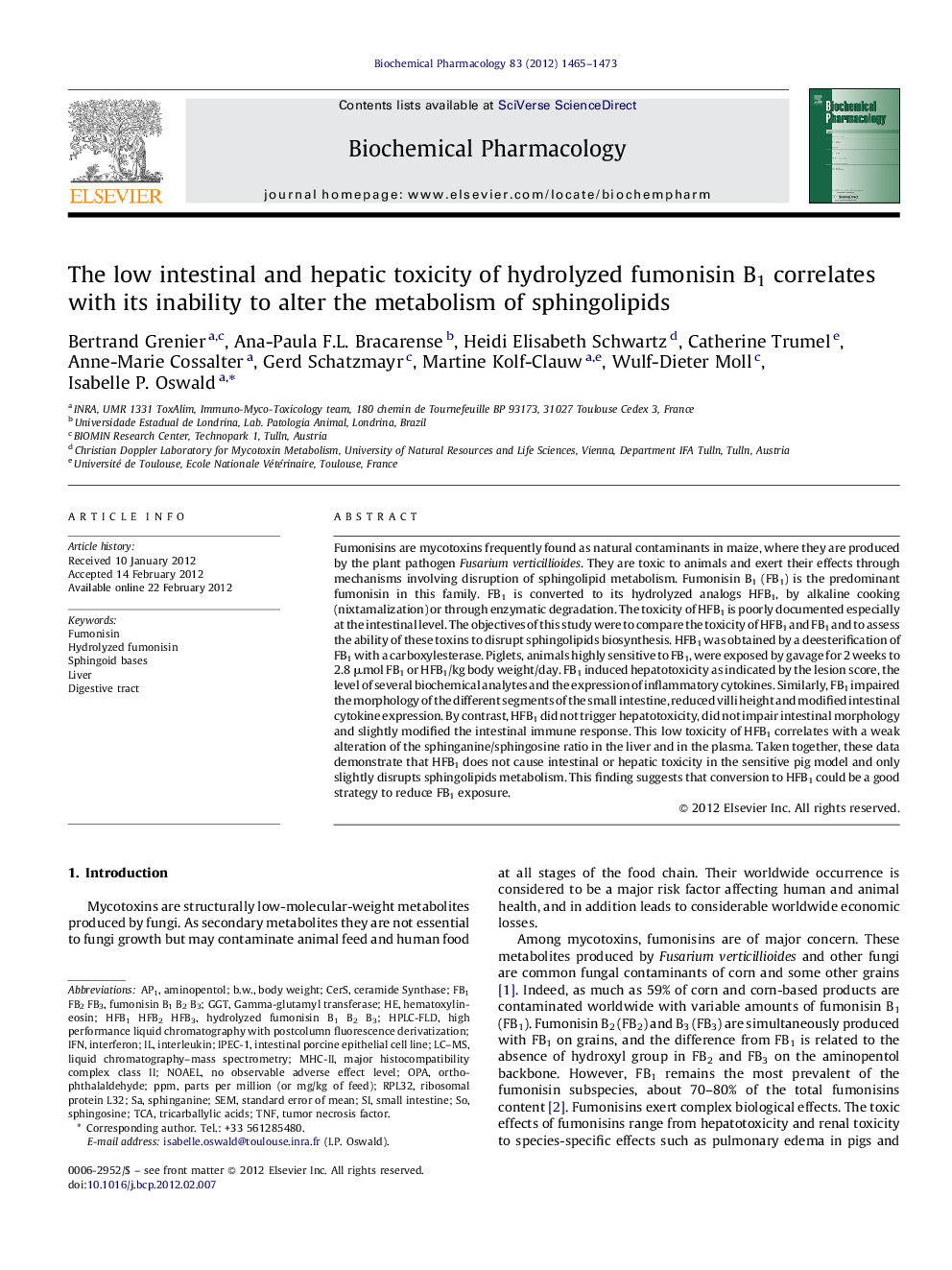| کد مقاله | کد نشریه | سال انتشار | مقاله انگلیسی | نسخه تمام متن |
|---|---|---|---|---|
| 5823945 | 1118374 | 2012 | 9 صفحه PDF | دانلود رایگان |
عنوان انگلیسی مقاله ISI
The low intestinal and hepatic toxicity of hydrolyzed fumonisin B1 correlates with its inability to alter the metabolism of sphingolipids
دانلود مقاله + سفارش ترجمه
دانلود مقاله ISI انگلیسی
رایگان برای ایرانیان
کلمات کلیدی
ppmMHC-IIAP1NOAELFumonisinHPLC-FLDb.w.CerSOPAIPEC-1TCASphingoid basesrpl32TNFGGTLC–MS - LC-MSaminopentol - آمینوپنتولOrtho-phthalaldehyde - ارتو فتالالدئیدsphinganine - اسپینژینینsphingosine - اسپینگوزینinterferon - اینترفرونIFN - اینترفرون هاinterleukin - اینترلوکینstandard error of mean - خطای استاندارد میانگینDigestive tract - دستگاه گوارشSmall intestine - روده کوچکceramide synthase - سنتاز سرامیدliquid chromatography–mass spectrometry - طیف سنجی جرم کروماتوگرافی مایعtumor necrosis factor - فاکتور نکروز تومورSEM - مدل معادلات ساختاری / میکروسکوپ الکترونی روبشیhematoxylin-eosin - هماتوکسیلین ائوزینno observable adverse effect level - هیچ سطح قابل توجهی از اثرات قابل مشاهدهbody weight - وزن بدنribosomal protein L32 - پروتئین Ribosomal L32Liver - کبدMajor histocompatibility complex class II - کلاس پیچیده بافتی عمده IIGamma-glutamyl transferase - گاما گلوتامیل ترانسفراز
موضوعات مرتبط
علوم پزشکی و سلامت
داروسازی، سم شناسی و علوم دارویی
داروشناسی
پیش نمایش صفحه اول مقاله

چکیده انگلیسی
Fumonisins are mycotoxins frequently found as natural contaminants in maize, where they are produced by the plant pathogen Fusarium verticillioides. They are toxic to animals and exert their effects through mechanisms involving disruption of sphingolipid metabolism. Fumonisin B1 (FB1) is the predominant fumonisin in this family. FB1 is converted to its hydrolyzed analogs HFB1, by alkaline cooking (nixtamalization) or through enzymatic degradation. The toxicity of HFB1 is poorly documented especially at the intestinal level. The objectives of this study were to compare the toxicity of HFB1 and FB1 and to assess the ability of these toxins to disrupt sphingolipids biosynthesis. HFB1 was obtained by a deesterification of FB1 with a carboxylesterase. Piglets, animals highly sensitive to FB1, were exposed by gavage for 2 weeks to 2.8 μmol FB1 or HFB1/kg body weight/day. FB1 induced hepatotoxicity as indicated by the lesion score, the level of several biochemical analytes and the expression of inflammatory cytokines. Similarly, FB1 impaired the morphology of the different segments of the small intestine, reduced villi height and modified intestinal cytokine expression. By contrast, HFB1 did not trigger hepatotoxicity, did not impair intestinal morphology and slightly modified the intestinal immune response. This low toxicity of HFB1 correlates with a weak alteration of the sphinganine/sphingosine ratio in the liver and in the plasma. Taken together, these data demonstrate that HFB1 does not cause intestinal or hepatic toxicity in the sensitive pig model and only slightly disrupts sphingolipids metabolism. This finding suggests that conversion to HFB1 could be a good strategy to reduce FB1 exposure.
ناشر
Database: Elsevier - ScienceDirect (ساینس دایرکت)
Journal: Biochemical Pharmacology - Volume 83, Issue 10, 15 May 2012, Pages 1465-1473
Journal: Biochemical Pharmacology - Volume 83, Issue 10, 15 May 2012, Pages 1465-1473
نویسندگان
Bertrand Grenier, Ana-Paula F.L. Bracarense, Heidi Elisabeth Schwartz, Catherine Trumel, Anne-Marie Cossalter, Gerd Schatzmayr, Martine Kolf-Clauw, Wulf-Dieter Moll, Isabelle P. Oswald,